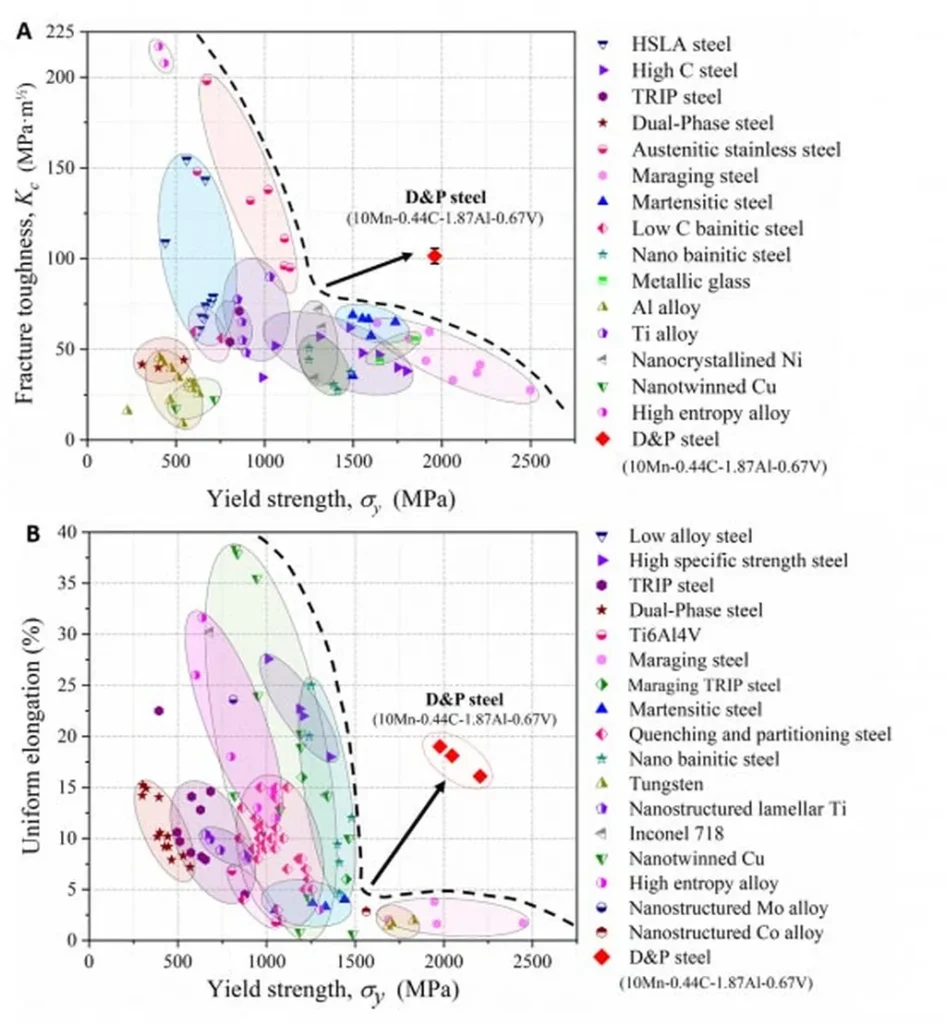In a groundbreaking development poised to reshape the energy sector, researchers have achieved an unprecedented combination of strength and ductility in austenitic stainless steel (ASS), a material widely used in power generation and other high-demand applications. The study, led by Chengyang Hu of the Key Laboratory for Ferrous Metallurgy and Resources Utilization at Wuhan University of Science and Technology in China, was recently published in the journal *Materials Research Letters*, which translates to *Materials Research Letters* in English.
The research overcomes a longstanding challenge in materials science: the trade-off between strength and ductility. Traditionally, enhancing one property often compromises the other. However, Hu and his team have developed a novel approach that not only boosts the yield strength of ASS to an impressive 1300 MPa but also maintains a remarkable ductility of 25%.
The key to this breakthrough lies in a unique combination of grain refinement and innovative copper (Cu) microalloying. Unlike conventional methods where Cu precipitates are randomly dispersed, the team discovered that nano-scale Cu precipitates form in ordered rows during the recrystallization process. This ordered arrangement enables coherent strengthening, contributing an additional 300 MPa to the material’s strength without sacrificing ductility.
“This ordered precipitation is a game-changer,” said Hu. “It allows us to achieve a level of performance that was previously thought impossible in austenitic stainless steels.”
The researchers also uncovered a new precipitation mechanism involving periodic nucleation at the moving grain boundary during recrystallization via discontinuous precipitation. This mechanism is not only scientifically significant but also offers a scalable strategy for designing high-performance ASS.
The implications for the energy sector are substantial. Austenitic stainless steels are widely used in power plants, nuclear reactors, and other energy infrastructure due to their excellent corrosion resistance and high-temperature performance. The enhanced strength and ductility achieved in this study could lead to safer, more efficient, and longer-lasting components, reducing maintenance costs and improving overall performance.
Moreover, the scalability of the technique means it could be readily adopted by industry, potentially revolutionizing the production of high-performance materials for energy applications.
“This research opens up new possibilities for the design and application of austenitic stainless steels,” Hu added. “We are excited about the potential impact on the energy sector and other industries that rely on high-performance materials.”
As the energy sector continues to evolve, the demand for advanced materials that can withstand extreme conditions and perform reliably over long periods will only grow. This research not only meets that demand but also sets a new standard for what is possible in materials science.
With the publication of this study in *Materials Research Letters*, the stage is set for further exploration and application of these findings. The future of austenitic stainless steels looks brighter than ever, promising to drive innovation and progress in the energy sector and beyond.

